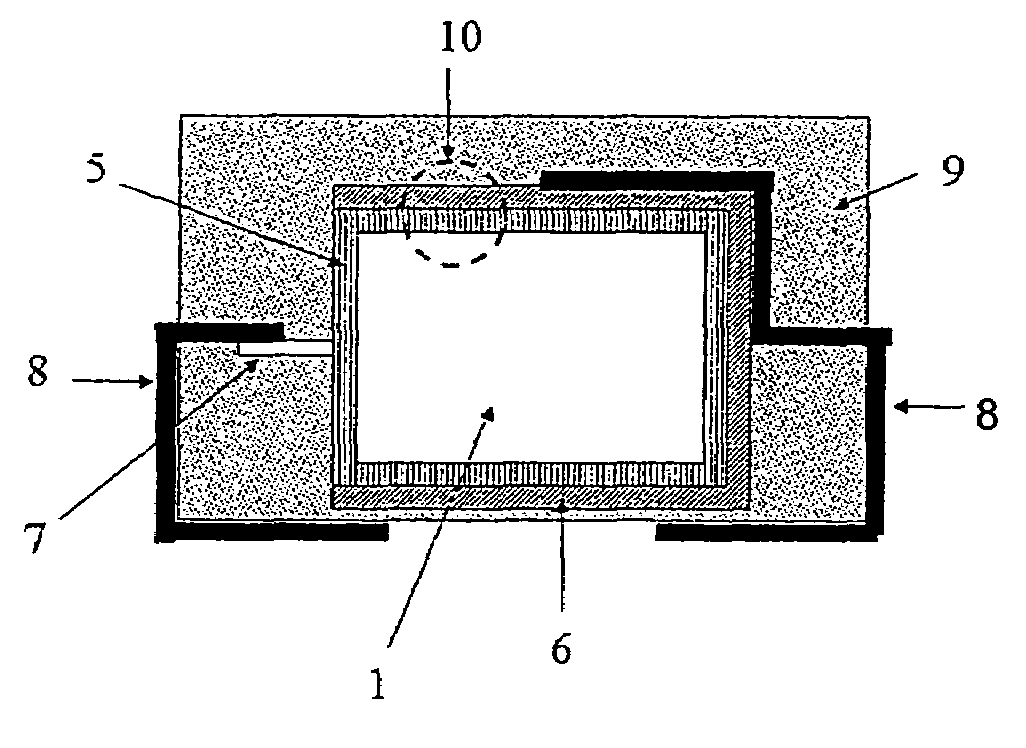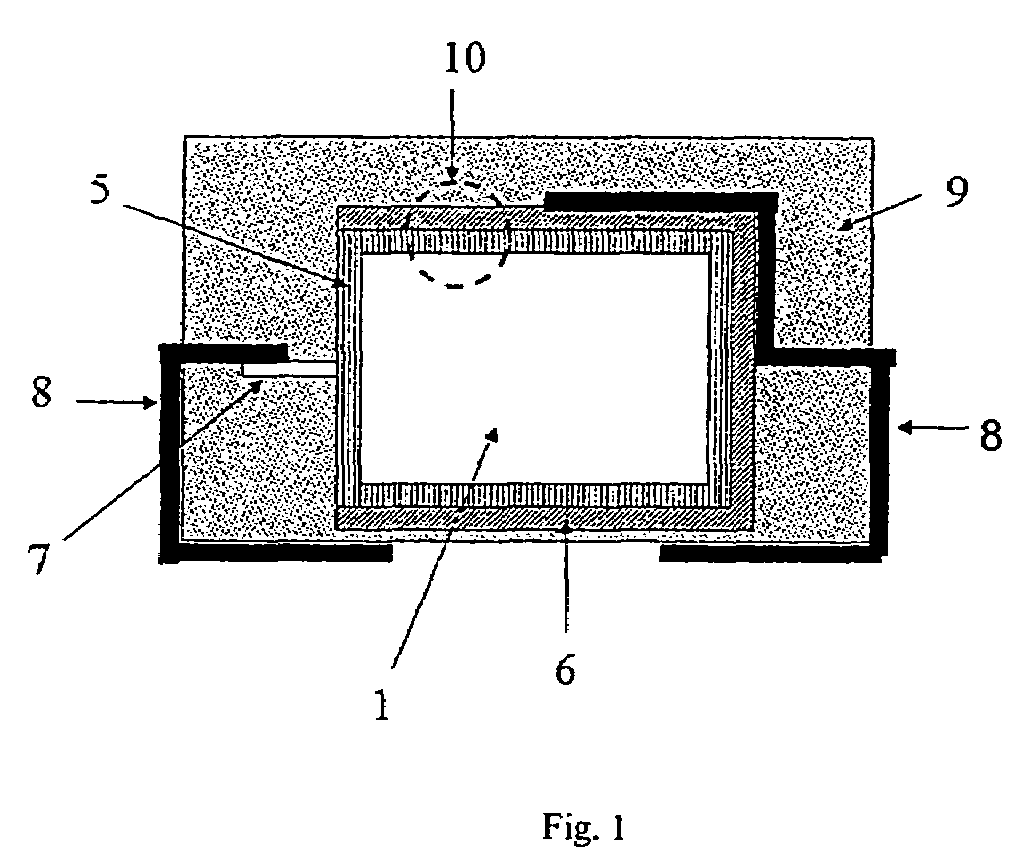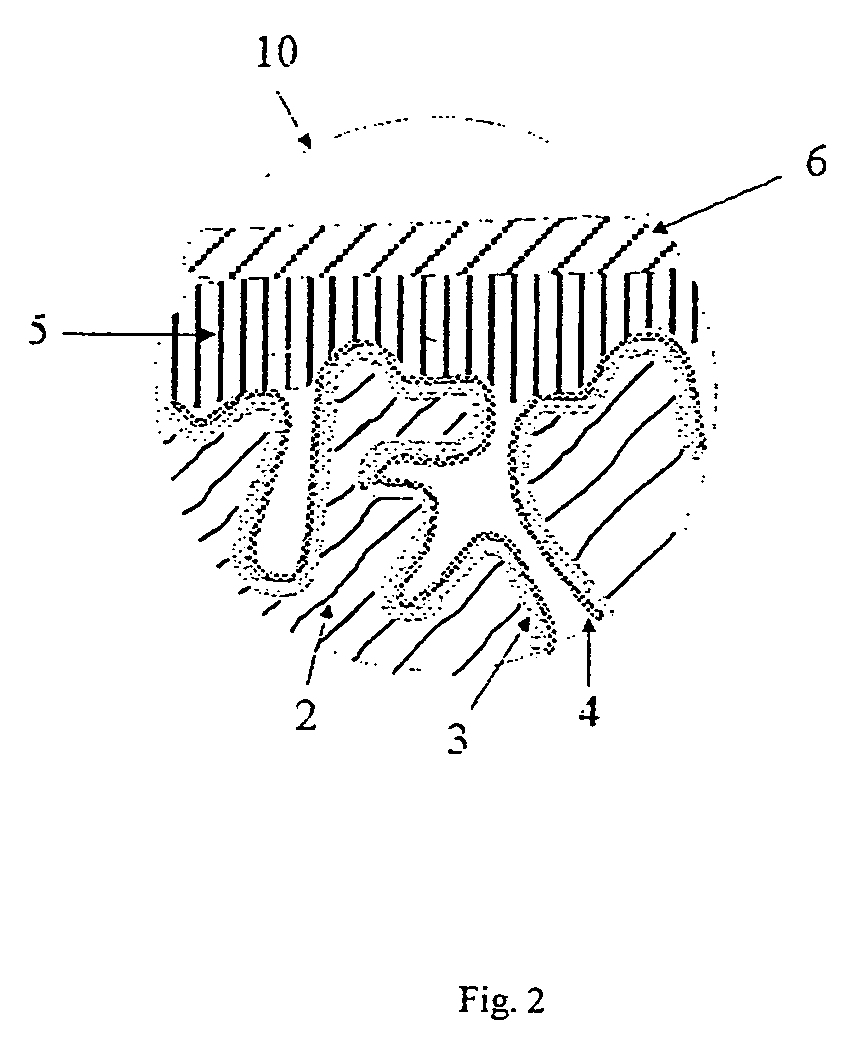Electrolyte capacitors having a polymeric outer layer and process for their production
a polymer outer layer and electrolyte technology, applied in the manufacture of electrolytic capacitors, variable capacitors, fixed capacitors, etc., can solve the problems of increasing the residual current of the capacitor anode, inability to form a thick polymeric outer layer through in situ polymerization, and inhomogeneous outer layer, etc., to achieve good covering of corners and edges
- Summary
- Abstract
- Description
- Claims
- Application Information
AI Technical Summary
Benefits of technology
Problems solved by technology
Method used
Image
Examples
example 1
[0197]1. Production of Oxidized Electrode Bodies
[0198]Tantalum powder having a specific capacitance of 50,000 μFV / g was pressed, with inclusion of a tantalum wire 7, to pellets 2 and sintered in order to form a porous electrode body 2 having the dimensions of 4.2 mm*3 mm*1.6 mm. The sintered pellets 2 (anode pellets) were anodized in a phosphoric acid electrolyte at 30 V.
[0199]2. Chemical In Situ Coating of the Anode Pellets
[0200]A solution comprising one part by weight of 3,4-ethylenedioxythiophene (BAYTRON® M, H. C. Starck GmbH) and 20 parts by weight of a 40 wt. % strength ethanolic solution of iron(III) p-toluenesulfonate (BAYTRON® C-E, H. C. Starck GmbH) was prepared.
[0201]The solution was used for impregnation of 18 anode pellets 2. The anode pellets 2 were impregnated in this solution and then dried at room temperature (20° C.) for 30 min. Thereafter, they were heat-treated in a drying cabinet at 50° C. for 30 min. The pellets 2 were then washed in a 2 wt. % strength aqueous ...
PUM
| Property | Measurement | Unit |
|---|---|---|
| diameter | aaaaa | aaaaa |
| particle diameter distribution | aaaaa | aaaaa |
| particle diameter distribution | aaaaa | aaaaa |
Abstract
Description
Claims
Application Information
 Login to View More
Login to View More - R&D
- Intellectual Property
- Life Sciences
- Materials
- Tech Scout
- Unparalleled Data Quality
- Higher Quality Content
- 60% Fewer Hallucinations
Browse by: Latest US Patents, China's latest patents, Technical Efficacy Thesaurus, Application Domain, Technology Topic, Popular Technical Reports.
© 2025 PatSnap. All rights reserved.Legal|Privacy policy|Modern Slavery Act Transparency Statement|Sitemap|About US| Contact US: help@patsnap.com



